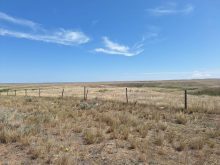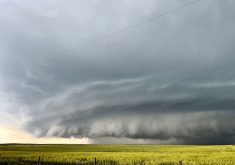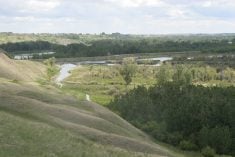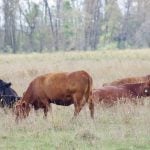CHICAGO, Ill. — Bryce Anderson didn’t bother packing a coat for this year’s trip to the Windy City to deliver his annual weather outlook.
It has been an unusually mild winter thanks to a lingering El Nino, which will continue to exert its influence right through spring.
Some forecasters believe El Nino will be followed by La Nina, bringing drought to the U.S. corn belt in 2016.
That has some crop analysts forecasting $6 corn next year.
Anderson, who is DTN’s senior agricultural meteorologist, isn’t in that camp.
Read Also

Canadian farmers need level playing field for regulations – says Minister MacDonald
Federal agriculture minister Heath MacDonald is urging the Canadian Food Inspection Agency and the Pest Management Regulatory Agency to speed up their decision making.
He told delegates attending DTN’s Ag Summit 2015 that the International Research Institute (IRI) for Climate and Society says there is a much better probability that El Nino will stick around through the summer of 2016 or that there will be neutral conditions.
The IRI said there’s a 21 percent chance that La Nina will form in the June through August period. It rises to 31 percent in the July through September period, which is still far from a certainty.
“At that time the crops will be pretty well along in terms of their development,” said Anderson.
In fact, farmers would likely welcome a late-developing La Nina that brought dry conditions during harvest.
Anderson said conditions are reminiscent of the winter of 1997, which was the strongest El Nino on record before this year.
A La Nina emerged by the late summer of 1998, but it didn’t have the dire consequences for U.S. crops that some analysts think is on the horizon for 2016.
Corn production in 1998 was up six percent from 1997. It was the second biggest corn crop in history at that time and the second highest average yield.
The soybean crop set a record that year, and the average yield tied for the second highest ever at that time.
Others point to the El Nino of 1987, which was followed by a strong La Nina in 1988. That combination led to an historic drought and vastly reduced production in the U.S. corn belt in 1988.
Anderson showed delegates a Palmer Drought Index map dating back to December 1987 and its counterpoint from this winter.
The 1987 map showed that it was already extremely dry in the Ohio Valley and the northern corn belt before La Nina arrived and made things worse.
There are no trouble spots in the 2015 map with the exception of California and some regions in the U.S. Northwest.
“Our soil moisture supplies are really quite plentiful at this point,” he said.
Anderson was more concerned about drought in Western Canada than in the grain producing regions of the United States.
El Nino will deliver warm and dry winter conditions across the prairie provinces.
“We’re seeing that play out already. It has been very hard to bring a lot of cold into the region, and we’re going to see that for the rest of the winter,” he said.
His forecast is identical for spring and early summer, and that is a concern because it is already dry in portions of the Prairies and there won’t be much winter precipitation relief.
“There will be some concern about drought formation in the start and at least through the first half of the growing season,” said Anderson.
He is forecasting a mild winter for much of the U.S. with above normal precipitation in the southern Plains and the southeast portion of the country and dry conditions in the Northwest and the Midwest.
His spring forecast calls for mild conditions across the U.S. with temperatures similar to the summer of 2015. There won’t be many days where the mercury rises above 30 C.
It will be dry in an area surrounding the Great Lakes, wet in the southern Plains and near normal for much of the corn belt.
“There is a pretty high likelihood that we are going to have another good year for crop production the way things are shaping up,” said Anderson.
El Nino will continue to bring dry conditions to southeastern Australia, Indonesia and South Africa.
Brazil will be wet in the south, dry in the north and a mixed bag in the all-important state of Mato Grosso.
Argentina will be wet in the central and eastern portions of the country and dry in the west.
Recent rain has improved conditions in Russia’s main wheat growing region.
China has adequate to surplus soil moisture in the southeast and mixed conditions in the central portion of the country, but it is dry in the northeast, where a lot of the country’s row crops are grown.
















